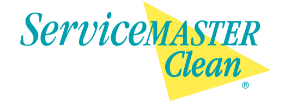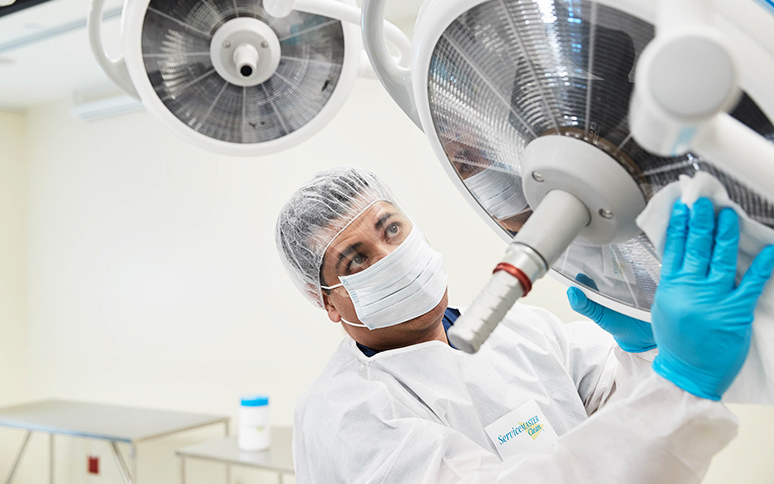Hazards to Be Aware of in Healthcare Settings
Healthcare settings are meant to treat people. However, nurses, doctors, surgeons, and other healthcare workers are exposed to several hazards and dangerous materials while on the job, putting themselves and even their patients at risk. To help protect your staff while they care for patients, use this list from ServiceMaster Clean to discover the most common hazards in the workplace, and how they can follow proper safety procedures to address these hazards.
Hazards in Healthcare
In addition to the typical risks to which healthcare workers might be subject, such as becoming injured while transporting a patient, suffering an illness after being exposed to an infectious disease, or slipping and falling while working, your staff is exposed to other dangerous hazards. Some common hazards in the workplace include exposure to:
Chemicals
Hazardous drugs
Radiation
While these dangers can cause many health risks, there are some things your team can do to help protect themselves from harm. Read the following information about each exposure risk and which OSHA standards and procedures are in place to keep your staff safe.
Chemicals
Chemicals frequently used in healthcare facilities include cleaning agents, disinfectants, and sterilizers. Sometimes, healthcare workers disinfect surgical utensils and other areas with particularly hazardous chemicals such as formaldehyde, ethylene oxide, and glutaraldehyde. If used incorrectly, these chemicals can put your employees at serious risk of mutagenic, teratogenic, and carcinogenic effects.
To protect your staff from high levels of exposure, the Occupational Safety and Health Administration (OSHA) has created certain requirements, best practices, and safety protocols your facility must follow every time an employee handles each dangerous chemical.
While protocol may differ depending on the chemical being used, there are general rules to follow while handling any of them. When using chemicals to clean, disinfect, sterilize, or otherwise sanitize spaces in healthcare settings, staff should:
Properly label chemicals
Wear the appropriate personal protective equipment (PPE)
Dispose of hazardous agents in the appropriate containers
Immediately report any chemical leaks or spills
Immediately report any exposure incidents
Learn the signs and symptoms of illness related to exposure to hazardous chemicals
Hazardous Drugs
According to the National Institute for Occupational Safety and Health (NIOSH), about eight million U.S. healthcare workers are potentially exposed to hazardous drugs. Exposure to these drugs may cause both acute and chronic health effects, including skin rashes, adverse reproductive outcomes, cancer, and more. Drugs are considered hazardous if they have any of the following descriptive criteria:
Genotoxicity
Carcinogenicity
Teratogenicity/Developmental toxicity
Reproductive toxicity
Organ toxicity at low doses
Structure/toxicity profiles of new drugs that mimic existing hazardous drugs
Since exposure to hazardous drugs can cause serious, irreversible effects, employees are required to follow OSHA's procedures for controlling exposure to hazardous drugs. These procedures include information on how to properly dispose of each hazardous drug, how to properly administer these drugs to patients to reduce the risk of personal exposure, how to handle storage and transport, how to clean spills, and more.
Radiation
Through the frequent use of portable and fixed x-ray machines and other diagnostic equipment, hospital staff can be subject to radiation exposure. The level of exposure will largely depend on how far away the employee is from the device and how long he or she was directly exposed to the radiation without wearing protective gear.
Acute radiation exposure can lead to nausea, vomiting, weakness, and diarrhea, while chronic exposure can cause severe mutagenic, teratogenic, and carcinogenic effects. To protect your employees from radiation exposure while caring for patients, you should always follow OSHA's recommendations around radiation. Some of these recommendations include:
Equipping x-ray rooms with barrier walls and lead-plated glass
Requiring workers and patients to wear lead aprons, lead gloves, and opaque goggles
Supplying proper personnel monitoring equipment such as pocket chambers, film badges, and pocket dosimeters
Storing any radioactive sources in a separate, shielded storage area
Maintaining records of any radiation exposure
As long as you follow OSHA's protocols while handling hazards, you can significantly reduce your risk of exposure incidents. To take your healthcare safety measures one step further, have your facility cleaned by the professionals. At ServiceMaster Clean, we offer janitorial healthcare services that have been developed with best practices and procedures from the leading industry organizations to help you with risk reduction, infection control and prevention, and more. Find out how our safety procedures and cleaning tactics for specific healthcare environments can help keep your facility safe.







